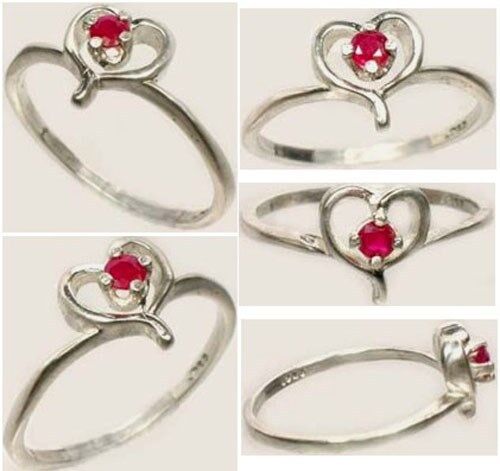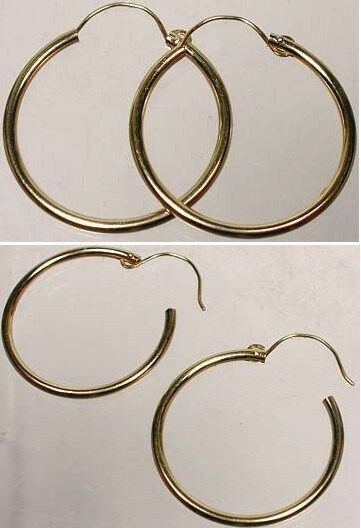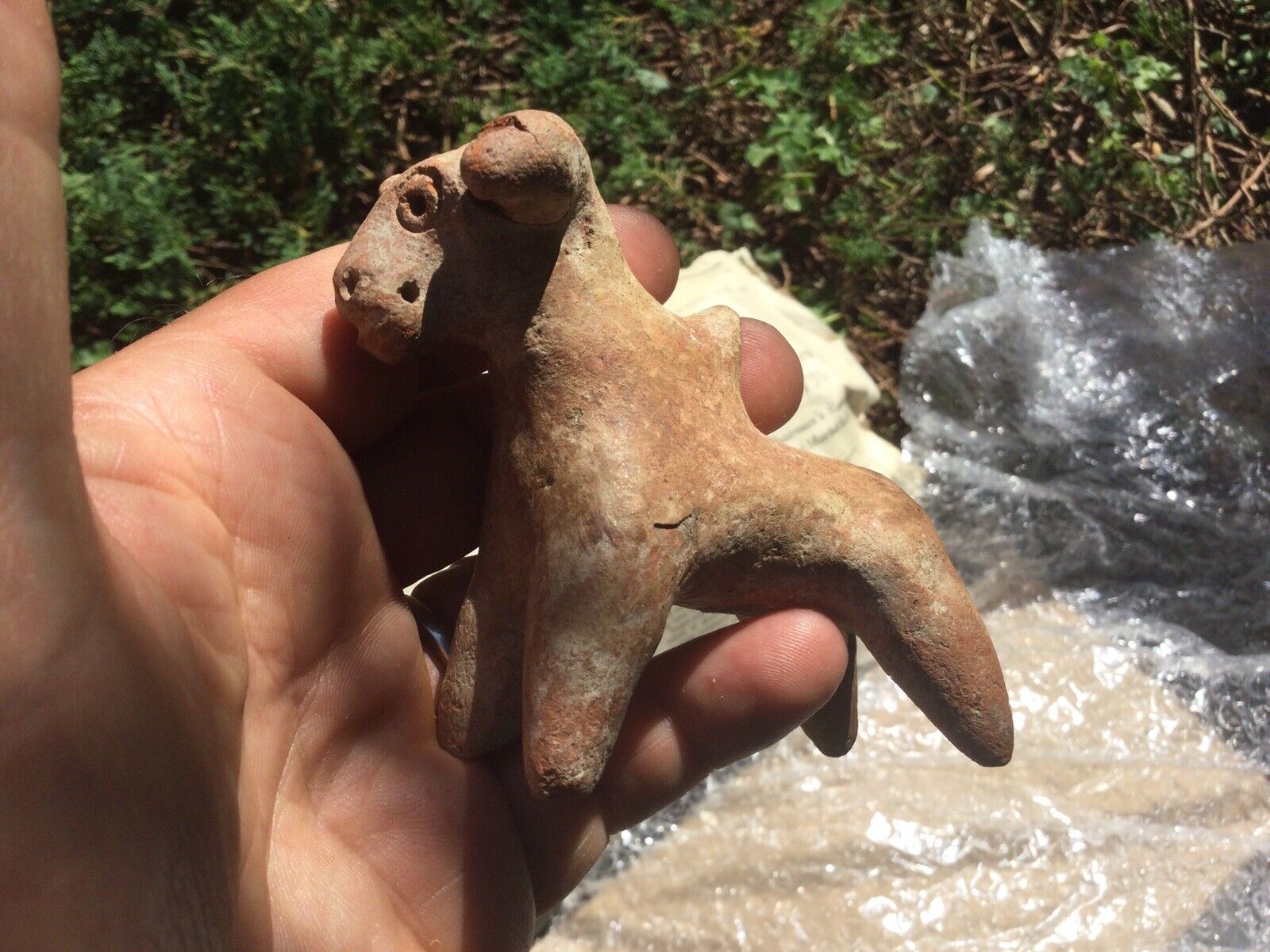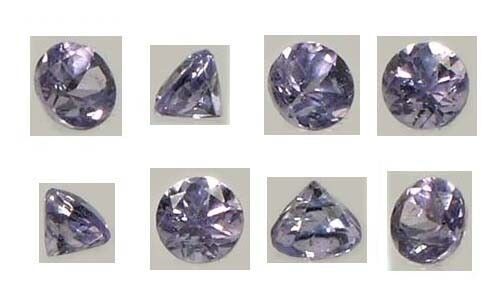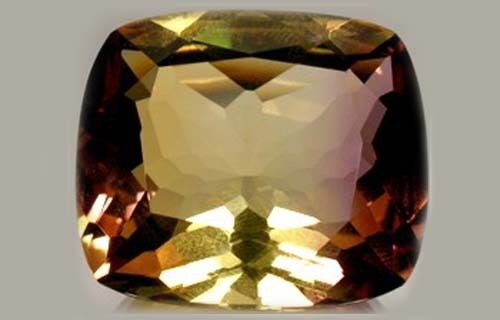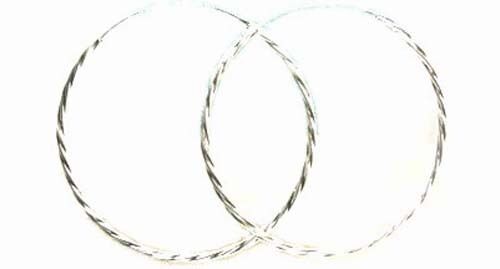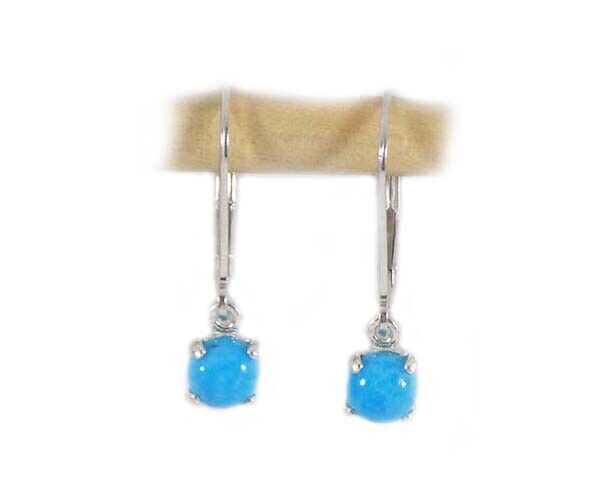-40%
19thC Antique Ruby Ancient Celt Druid Roman Persian Magic Talisman Plague Poison
$ 52.79
- Description
- Size Guide
Description
Brilliant, Sparkling Antique 19th Century Genuine Natural Good Quality Faceted Ruby Round. Contemporary High Quality Sterling Silver Ring (Size 7 – Resizing Available).CLASSIFICATION:
Faceted Ruby Precious Gemstone Round.
ORIGIN:
Handcrafted in Russia, 19th Century.
SIZE
: Diameter: 3mm. Depth: 2mm. Measurements approximate.
WEIGHT
: 0.13 carats.
NOTE
: Resizing is available. If you would prefer a different setting style, odds are we have many different setting styles available which would fit this stone(s) which could be substituted for no or very little additional cost. 14kt solid gold settings are also available. Write us for pictures and prices.
NOTE
: If you would like only the gemstone, and not the setting, we can dismount the gemstone and offer you the gemstone without the setting. Just let us know, and yes, we’ll discount the price by the cost of the setting.
DETAIL:
Rubies were amongst the earliest gemstones traded by mankind, since the 5th millennium B.C. From the most ancient times all the way through the medieval world, ruby was worn by the classical Mediterranean civilizations (Greeks, Romans, Persians, and the Indo-European “Celtic” peoples) as an amulet for protection from lightening, plagues, poison, sorrow, and evil spirits. The ancient populations of the Mediterranean also believed that the color of a ruby would change mirroring changes in the health of its owner, and that the color would drain from a ruby at the moment its owner died. The Bible makes numerous mentions of ruby, first as one of the twelve precious stones created by God when he created mankind. Ruby is then described as “the lord of gems” when one was given to Aaron on the command of God. In the classical world, rubies from Afghanistan, Ceylon, and Burma were traded in the ancient port cities of the Eastern Mediterranean (often by Phoenicians), and from there traveled throughout Europe.
Celebrating this cultural legacy here is an absolutely exquisite, very good quality 19th century antique hand faceted ruby. Hand crafted by a 19th century Russian artisan, part of an heritage renown for the production of the elaborate gemstones and jewelry of the Czars of Medieval, Renaissance, and Victorian Russia. The faceted cut is a coarse precursor to what eventually became known in the industry as a “brilliant cut” round, the contemporary finish generally given to round diamonds. Originally used in indigenous jewelry, this is a very beautiful precious gemstone, with a highly desirable bright, blood red color and rich texture. The color is that perfect, intense, deep, richly hued blood red which rubies are so famous for.
This sparkling precious gemstone is transparent, clean to the cursory inspection of the casual admirer, and even under intense scrutiny, is eye-clean or near-eye-clean. The accompanying photo enlargements show only a very modest amount of wispy colorless crystalline blemishes, certainly not discernible with the naked eye. If you hold the gemstone up to the light, with very careful scrutiny you might be just able to discern a little bit of wispy, colorless crystalline material. However you can also appreciate the high degree of transparency as well as the wonderful tone and color! The gemstone is also quite dark in tone, and of course the darker the tone the less light penetrates. But give it some light, and the depth of the color and its richness is wonderfully apparent.
Of course most ruby gemstones are anywhere from lightly to heavily blemished, often with black carbon specks (of which this gemstone possesses none). Even higher grade ruby (and sapphire) is oftentimes lightly blemished with colorless crystal material (as is this gemstone). Such colorless crystalline blemishes are an almost hallmark characteristic of natural ruby. The colorless crystals might be eye-visible, in the forms of seams; or might be in the form of microscopic crystals which while not individually discernible, nonetheless cause the ruby to be "hazy" in character, rendering the gemstone translucent, or even opaque, rather than transparent. Most completely transparent, absolutely flawless rubies you see offered today at retail are either synthetic (read the fine print carefully) or cost ,000 a carat.
The setting is of contemporary origin. It is a high quality setting manufactured by one of the USA’s leading semi-custom mount producers. It is constructed of solid sterling silver. We do have the ability to have the ring sent out for resizing if requested. There are many other ring styles available, if you would like to see them, just contact us, we would be happy to share them with you (email us for pictures). Most other setting styles in sterling silver are available at no additional cost. Additionally, if preferred, this mounting (as well as a wide variety of ring settings in other appealing styles) are also available in 14kt solid gold.
As might be expected under magnification the gemstone shows the unmistakable, hallmark characteristics of having been hand crafted. The coarseness of the antique, handcrafted finish is considered desirable to most gemstone aficionados, and is not considered a detriment, or detract from the value of a gemstone. These characteristics are not only expected of hand-finished gemstones, many believe that such antique hand-crafted gemstones possess much greater character and appeal than today's mass-produced, laser-cut gemstones. Unlike today’s computer controlled machine produced gemstones that approach flawlessness in a perfect finish, the cut and finish of an antique, handcrafted gemstone such as this is the legacy of an artisan who lived two centuries ago.
Handcrafted though it may be the gemstone possesses wonderful luster and sparkle, and to the eye is transparent, but it is not absolutely without flaw. True, any blemishes it possesses are not visible to the naked eye, and to use trade jargon, the gemstone can be characterized as "eye clean" or at least to very intense scrutiny, “near eye clean”. To the eye of the casual admirer it is indeed without discernible blemish. However magnified as it is here in the accompanying photo enlargements or in a jeweler’s loupe you might be able to pick out a few imperfections within the gemstone, barely perceptible even at such high magnification, and as well occasional irregularities in the faceting and finish.
Of course this may be said about most any antique gemstone of natural origin. An absolutely flawless gemstone is very rare in ature (and usually turns out to be synthetic). Sooner or later blemishes will show up at higher levels of magnification with almost every natural gemstone. However the coarse finish and occasional blemish are characteristics that are not only expected of antique hand-crafted gemstones, you must also consider that two centuries ago the mining techniques even theoretically possible, let alone commonly practiced, did not allow the ultra deep mining operations which are so commonplace today. Two centuries ago mankind was more or less limited to surface deposits or near surface deposits of gemstones.
Higher quality gemstones which today are routinely mined from beneath hundreds of meters, even kilometers beneath the earth's surface, were simply inaccessible then. It is precisely for these reasons antique gemstones must be appreciated as antiques first, gemstones second. The relatively superlative quality of contemporary gemstones routinely mined from deep beneath the earth's surface today were simply not accessible two centuries ago, or at least, only rarely so. However for most, the unique nature and character of these antique gemstones more than makes up for the blemishes found within the gemstones, as well as the cutting irregularities common to handcrafted gemstones, all of which are by and large (if at all) are only visible under magnification.
RUBY HISTORY:
The name ruby comes from the Latin "rubeus" (red). In the ancient world ruby was believed to possess magical powers, and was worn as a talisman for protection from plagues, poison, sorrow, and evil spirits. The ruby symbolized freedom, charity, dignity and divine power, and was associated with fire and blood, implying warmth and life for mankind. Some ancient cultures believed that rubies, as well as other gemstones, grew on trees, just like fruit. The rubies would begin budding as small white gems, and would slowly grow and ripen, turning red in the light of the sun. When the ruby was saturated with red color, it was ready to be plucked. In the classical world, rubies from Afghanistan, Ceylon, India and Burma were traded in the ancient port cities of the Eastern Mediterranean (often by Phoenicians), and from there traveled throughout Europe.
However it is believed that
most
of the ancient world’s ruby came from Ceylon, where evidence suggests ruby may have been mined for the past 20,000 years. Archaeologists have uncovered ancient Etruscan jewelry with Celanese ruby which dates back to the seventh century B.C. However scientists believe that ruby has also been mined in Burma since Paleolithic and Neolithic times as well, as tools have been excavated by archaeologists dating both to the Bronze Age as well as backwards into the Stone Age. In ancient literature, the ruby was described both by the fourth century B.C. Greek Philosopher/Scientist Theophratus (student and successor of Plato and Socrates) as well as by Pliny, the first century A.D. Roman historian and naturalist. In ancient Rome the ruby was associated with the principles of justice and its administrators (the judicial system).
Ancient literature from China indicates that ruby was traded along the northern silk route, moving westward into Europe. The Bible as well makes numerous mentions of ruby, first as one of the twelve precious stones created by God when he created mankind. Ruby is then described as “the lord of gems” when one was given to Aaron on the command of God. And ruby adorned Aaron's breastplate and was symbol of Judah. The Bible also frequently states that the high value of ruby was only exceeded by wisdom and by virtuous women, implying that ruby indeed was exceptionally valuable. The Greeks believed that the "fire" evidenced by a ruby's red coloration could melt wax. Greeks legends speak about huge rubies which were given to Heraclea by the female stork to lighten her room as a token of her kindness.
The ancient populations of the Mediterranean also believed that the color of a ruby would change mirroring changes in the health of its owner, and that the color would drain from a ruby at the moment its owner died. In Antiquity and through the Middle Ages it was believed that the cosmos was reflected in gemstones. Ruby was associated with the planet Mars. Ruby was deemed to be the most precious of gemstones not only in the Bible, but also in ancient Sanskrit writings. In Sanskrit, an ancient language of India, ruby was called "ratnaraj", which means "King of Gems". To them, this fiery stone burned with an inextinguishable fire, capable of boiling the water in which it was placed. Ancient Indian legends said that God first created ruby and later created man to possess it, and that he who offered rubies to the gods would be reincarnated as a powerful king or emperor.
In ancient India rubies were also sorted into upper class, middle class, and lower class stones in relation to their color, flawlessness and beauty. Much like Indian society today, no inferior ruby was allowed contact with an upper class ruby because it was believed the low-caste ruby would contaminate the better one, thereby diminishing its magical powers. In nearby ancient Burma it was felt a ruby must not just be worn, but embedded in the skin to become part of the body, thus making the wearer invulnerable. Up in time through Medieval Europe, rubies were worn as a talisman for protection against unhappiness, lightening and upsetting dreams. The ruby was also believed to encourage bliss, and was used to treat fever and heart disorders relating to blood flow through the ventricles. It was also believed that when worn on the left hand or in a brooch on the left side, ruby enabled the wearer to live in peace among enemies.
Ruby was greatly valued in the Medieval Arab world. There are many references to ruby in ancient Arabic literature, including many references to “yakut”, a term used for red corundum (ruby) during the sixth through tenth centuries, culminating in a noteworthy treatise by the 11th century Arab scholar Al-Biruni, who conducted specific gravity determinations on a whole series of gemstones. Throughout Medieval Central Asia, the Near East, and China ruby was used to ornament armor, scabbards, and harnesses of noblemen. Rubies were laid beneath the foundation of buildings to secure good fortune to the structure. Much of the ruby reaching early Medieval Europe came from Badakshan, on the border between present-day Tajikistan and Afghanistan. Marco Polo described visiting these mines in his accounts of his travels. Later Medieval Europe’s rubies came principally from the border region between Burma and Siam (present-day Myanmar and Thailand).
In Medieval Europe, rubies were considered even more valuable than diamonds. In 16th century ruby was priced 8 times higher than diamond. Rubies were viewed as a stone of prophecy, used by medieval shamans and sorcerers to divine the future. Ruby was also worn as a talisman, as it was believed that the stone darkened when danger was near and then returned to its original color when the danger was past. It was believed that wearing ruby would attract good health, wisdom, fortune, and true love. Ruby was also thought to be an antidote to poisoning as well. In England, ruby was used for royal coronation rings. Medieval Europe also believed that ruby had important medical applications. A thirteenth century prescription to cure liver problems called for powdered ruby, and it was also believed that when rubbed on the skin, ruby would restore youth and vitality. Ivan the Terrible of Russia stated that rubies were good for the heart, brain and memory.
Rubies are mined all over the world, but the highest quality gemstones come from Burma, Ceylon, and Siam, then India, Madagascar, Russia, Zimbabwe, Afghanistan, Pakistan, Kenya, Tanzania, Mexico, and North Carolina in the USA. Ruby is the red variety of corundum, the second hardest natural mineral known to mankind. The non-red variety of corundum is Sapphire. Sapphires are well known among the general public as being blue, but can be nearly any color. A ruby's color is due to a trace of chromic oxide; the amount of this trace mineral determines the depth of color. The most sought after shade of red for ruby is often given the name "pigeon blood red", but ruby can be any shade of red up to almost pink. The only source of "pigeon blood" rubies is Mogok in Upper Burma, about ninety miles from Kepling's Mandalay, and are known in the trade as "Mogok" rubies, and are considered the finest in the world.
<
In Mogok, the rubies are mined by natives according to centuries-old customs. From ancient times through the Middle Ages and into the Victorian period, all Mogok rubies belonged to the King. There are references to several rubies in the weight range between 100 and 400 carats reportedly mined during the nineteenth century and presented to the King of Burma. It is known that in the nineteenth century the British Museum of Natural History acquired a 167 carat Burmese ruby which remains there today on display, and there also exists a 196 carat specimen at the Los Angeles County Museum of Natural History. Two massive, uncut rubies which remain the possession of the Burma/Myanamar government include “the Sun of Mogok”, weighing 1743 carats, and the “Navara Ruby”, weighing 505 carats.
The famous "Hill of Precious Stones", near Bangkok, Thailand, yields rubies of a deeper shade with purple undertones. Rubies from Ceylon (Sri Lanka) tend toward violet, and are lighter in color. Oriented rutile crystal inclusions cause a six-rayed-star light effect (called asterism) to form the popular "Star Ruby". The "Star Ruby" is also known as a "Mysore Ruby" as the majority are mined in Mysore, India. However the largest star ruby known is a 138.7 carat specimen which was mined from Ceylon, and is presently at the Smithsonian in Washington, D.C. The color of ruby is accompanied by a marked fluorescence, which is stimulated by natural and artificial light making rubies turn brighter red under such light. The King of Ceylon was said to possess a ruby that shone so brightly that when he brought it out at night, it would light up the entire palace.
Experts consider that the color is ruby’s most important attribute, while its transparency is secondary. It is almost impossible to find a ruby of finer quality over 3 carats in size, therefore, minor blemishes are deemed acceptable and most ruby jewelry is made with stones under 3 carats. In fact the blemishes within a ruby are like fingerprints, proving its authenticity and revealing the beauty and the individuality of each stone. Throughout the history of the ancient world, gemstones were believed capable of curing illness and providing protection. Found in Egypt dated 1500 B. C., the "Papyrus Ebers" offered one of most complete therapeutic manuscripts containing prescriptions using gemstones and minerals. Gemstones were not only valued for their medicinal and protective properties, but also for educational and spiritual enhancement.
In these as well as other ancient cultures, it was believed that rubies brought health, wealth, wisdom, and success in love to those who wore them. The ruby was associated with the sun, and was thought to preserve both mental and physical health. The medicinal uses of ruby included its use to overcome exhaustion and calm hyperactivity. Ruby was also used to detoxify the body and blood, treat fevers, diseases, and restricted blood flow. Wearing ruby was believed to benefit the heart and circulatory system and stimulate the adrenals, kidneys, reproductive organs and spleen. According to one ancient text, ground to a fine powder and placed on the tongue, ruby was used to cure blood diseases, stop bleeding, ensure good health, bring peace, and treat indigestion. Ruby was also believed to be an effective treatment for backaches.
On the metaphysical plane, for thousands of years, ruby was considered the stone of love, passion, and power. It was believed to represent masculinity, nobility, and valor in men; pride, seductiveness, and passion in women. Ruby was believed to restore vital life forces and increase energy, vigor, and zest for life. Ruby was also regarded as the stone of courage, ancient sources citing that the wearer of ruby could pass through life without fear of evil or misfortune, and that ruby would make the wearer invulnerable to wounds, an especially useful attribute for ancient warriors. Wearing ruby was believed to strengthen the wearer during times of controversy or dispute, to shield against physical attack, to enhance creativity and spirituality, and to inspire confidence and self-esteem. Ruby was also believed to be capable of arousing passion and enthusiasm and attracting sexual activity. Even today in Asia ruby is worn by businessmen who believe that ruby improves motivation and the setting of goals, and promotes dynamic leadership. They are believed to heighten one’s state of mind, sharp, hyper-aware and focused.
Domestic shipping (insured first class mail) is included in the price shown. Domestic shipping also
includes
USPS Delivery Confirmation (you might be able to update the status of your shipment on-line at the
USPS Web Site
). Canadian shipments are an extra .99 for Insured Air Mail; International shipments are an extra .99 for Air Mail (and generally are NOT tracked; trackable shipments are EXTRA).
ADDITIONAL PURCHASES
do receive a
VERY LARGE
discount, typically about per item so as to reward you for the economies of combined shipping/insurance costs. Your purchase will ordinarily be shipped within 48 hours of payment. We package as well as anyone in the business, with lots of protective padding and containers.
We do NOT recommend uninsured shipments, and expressly disclaim any responsibility for the loss of an uninsured shipment. Unfortunately the contents of parcels are easily “lost” or misdelivered by postal employees – even in the USA. If you intend to pay via PayPal, please be aware that PayPal Protection Policies REQUIRE insured, trackable shipments, which is INCLUDED in our price. International tracking is at additional cost. We do offer U.S. Postal Service Priority Mail, Registered Mail, and Express Mail for both international and domestic shipments, as well United Parcel Service (UPS) and Federal Express (Fed-Ex). Please ask for a rate quotation. We will accept whatever payment method you are most comfortable with. If upon receipt of the item you are disappointed for any reason whatever, I offer a no questions asked return policy. Send it back, I will give you a complete refund of the purchase price (less our original shipping costs).
We travel to Russia each year seeking antique gemstones and jewelry from one of the globe’s most prolific gemstone producing and cutting centers, the area between Chelyabinsk and Yekaterinburg, Russia. From all corners of Siberia, as well as from India, Ceylon, and Siam, gemstones have for centuries gone to Yekaterinburg where they have been cut and incorporated into the fabulous jewelry for which the Czars and the royal families of Europe were famous for. My wife grew up and received a university education in the Southern Urals of Russia, just a few hours away from the mountains of Siberia, where alexandrite, diamond, emerald, sapphire, chrysoberyl, topaz, demantoid garnet, and many other rare and precious gemstones are produced. Though perhaps difficult to find in the USA, antique gemstones are commonly unmounted from old, broken settings – the gold reused – the gemstones recut and reset.
Before these gorgeous antique gemstones are recut, we try to acquire the best of them in their original, antique, hand-finished state – most of them centuries old. We believe that the work created by these long-gone master artisans is worth protecting and preserving rather than destroying this heritage of antique gemstones by recutting the original work out of existence. That by preserving their work, in a sense, we are preserving their lives and the legacy they left for modern times. Far better to appreciate their craft than to destroy it with modern cutting. Not everyone agrees – fully 95% or more of the antique gemstones which come into these marketplaces are recut, and the heritage of the past lost. But if you agree with us that the past is worth protecting, and that past lives and the produce of those lives still matters today, consider buying an antique, hand cut, natural gemstone rather than one of the mass-produced machine cut (often synthetic or “lab produced”) gemstones which dominate the market today.
Our interest in the fabulous history of Russian gemstones and the fabulous jewelry of the Czar’s led to further education and contacts in India, Ceylon, and Siam, other ancient centers of gemstone production and finishing. We have a number of “helpers” (family members, friends, and colleagues) in Russia and in India who act as eyes and ears for us year-round, and in reciprocity we donate a portion of our revenues to support educational institutions in Russia and India. Occasionally while in Russia, India, Siam, and Ceylon we will also find such good buys on unique contemporary gemstones and jewelry that we will purchase a few pieces to offer to our customers here in America. These are always offered clearly labeled as contemporary, and not antiques – just to avoid confusion. We can set most any antique gemstone you purchase from us in your choice of styles and metals ranging from rings to pendants to earrings and bracelets; in sterling silver, 14kt solid gold, and 14kt gold fill. When you purchase from us, you can count on quick shipping and careful, secure packaging. We would be happy to provide you with a certificate/guarantee of authenticity for any item you purchase from me. There is a fee for mailing under separate cover. Please see our
"ADDITIONAL TERMS OF SALE."
TRANSLATE
Arabic
Chinese
French
German
Greek
Indonesian
Italian
Hindi
Japanese
Korean
Swedish
Portuguese
Russian
Spanish
